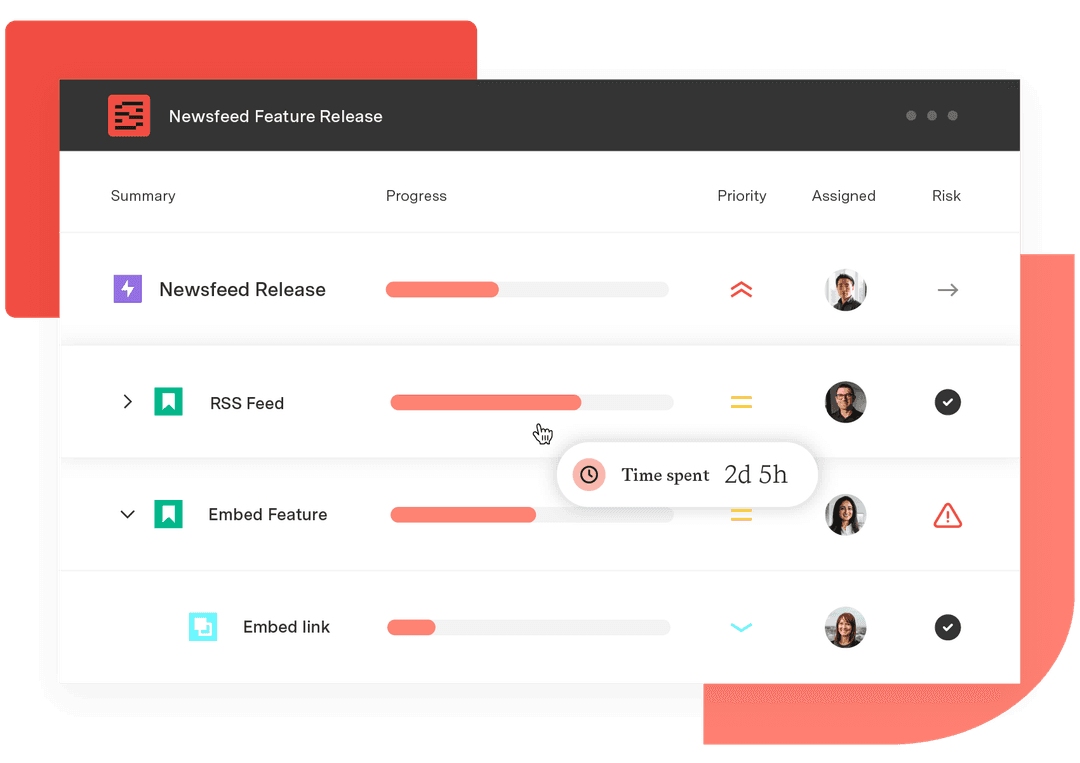7 reasons strategic plans fail (and how you can avoid them)
Tempo Team
Benjamin Franklin said: “By failing to prepare, you prepare to fail.” This holds especially true in project management and business.
Consider setting out on a drive without first planning your trip. Without an ultimate destination, a map, weather forecasts, traffic updates, or knowledge of the route, you can’t expect to get anywhere fast. With unexpected issues and delays added into the mix, you might not get anywhere at all.
If you want your project to arrive in scope, on time, with all stakeholders happy, and a team that’s still intact, you need to plan ahead. Our planning best practices can help you do that.
Why plans fail
With so many factors in play, it will always be somewhat difficult to estimate plans accurately. However, many of the issues that cause plans to fail can be addressed preemptively with effective project management tools.
Here are some reasons why strategic initiatives and plans fail.
1. Unrealistic / unfocused goals
Strategic plans must be focused, including a manageable set of goals, objectives, and programs.
According to a study of project communication in industry, implementing effective communication methodologies as part of the planning process is crucial. Scope must be comprehensive, detailed, and crystal clear to all relevant stakeholders. Implementing a holistic planning process, building a realistic business direction for the future, and employing effective communication channels among teams greatly improves the chances for successful implementation of your overall business strategy.
2. Unnecessary complexity
Knowledge is power, and it can be tempting to provide exhaustive detail at every opportunity. However, excessive complexity creates more questions than it answers.
If you can’t effectively communicate strategic initiatives because of their complexity, team members can’t be expected to carry them out as intended. When constructing an overview, trust that less is more and provide only what is needed. Prioritize alignment over omniscience.
3. Inaccurate cost estimates
Accurately estimating costs is difficult, for good reason. It’s important. Unfortunately, projects often begin with only a vague (or hopeful) general cost estimate in place. The further a project is allowed to progress without adequate financial controls and checks in place, the higher the ultimate cost is likely to be. This extends beyond bottom-line financial costs to customer satisfaction and even your perceived reliability as a business.
Allow enough time to fine-tune your forecasting. It will save you time and money when it really matters.
4. Insufficient data
Relevant project data is often scarce in the initial planning phase – particularly in the software development realm. Poor data begets plans that are vague and misguided. Teams need a proper tool in place to help teams flexibly modify plans as a project evolves and more information becomes available.
If plans are made based on insufficient or misunderstood data, they are unlikely to succeed. This is especially true without contingency plans in place to mitigate issues encountered along the way.
5. Inflexible / undefined roles and responsibilities
Performance of project managers and team members is measured against how well a project delivers according to its designated plan. Problems arise when there is confusion over who is responsible for which aspects of that plan, or obstacles in the way of adjusting those responsibilities.
It is imperative that – from the outset – everyone involved in a project understands what their work will be, how it fits into the project as a whole, and to whom they will be reporting. It’s also important to have mechanisms by which their feedback can impact planning and project processes, particularly when changes in circumstances require it.
Projects change. Teams need room to adapt alongside them.
6. Poor resource planning
Resource planning is a crucial part of the project planning process. After all, plans depend on the people who deliver them. Project timelines and overall costs can be gravely affected by incorrect assumptions and estimates regarding human resource requirements. Resource planning needs to factor in team numbers, roles, skill levels, and capacity. Data and information is crucial throughout the project process to monitor availability and project status, and to inform any necessary course corrections.
Learn how to unlock your team’s potential with data-driven resource planning.
7. Rigid scope
Implementing a plan does not guarantee that all will go as expected. It’s never ideal when the scope of a project changes, and that can often be avoided through proper planning, but flexibility is an important fail-safe. Being adaptable and having a “Plan B” in place makes overall project success more attainable.
How can you keep your plans from failing?
Creating a robust plan before beginning its implementation has plenty of benefits. It enables better organization. It allows for a better understanding of objectives. It ensures project alignment with broader organizational goals. It illuminates potential issues. It reduces uncertainty. It empowers project teams to succeed.
Organizations that adopt project portfolio management (PPM) solutions, and conduct ongoing reviews of these projects, see a marked increase in success.
Well-defined project planning also provides a basis for monitoring and controlling work on the project, which is crucial to staying on top of schedules, milestones, costs, risks, and issues. Employing effective software measurement tools is therefore essential in both the immediate and long term – for early forecasting and estimates as well as measuring compliance and identifying trends or deviations along the way.
Sign up for a demo
Register













































